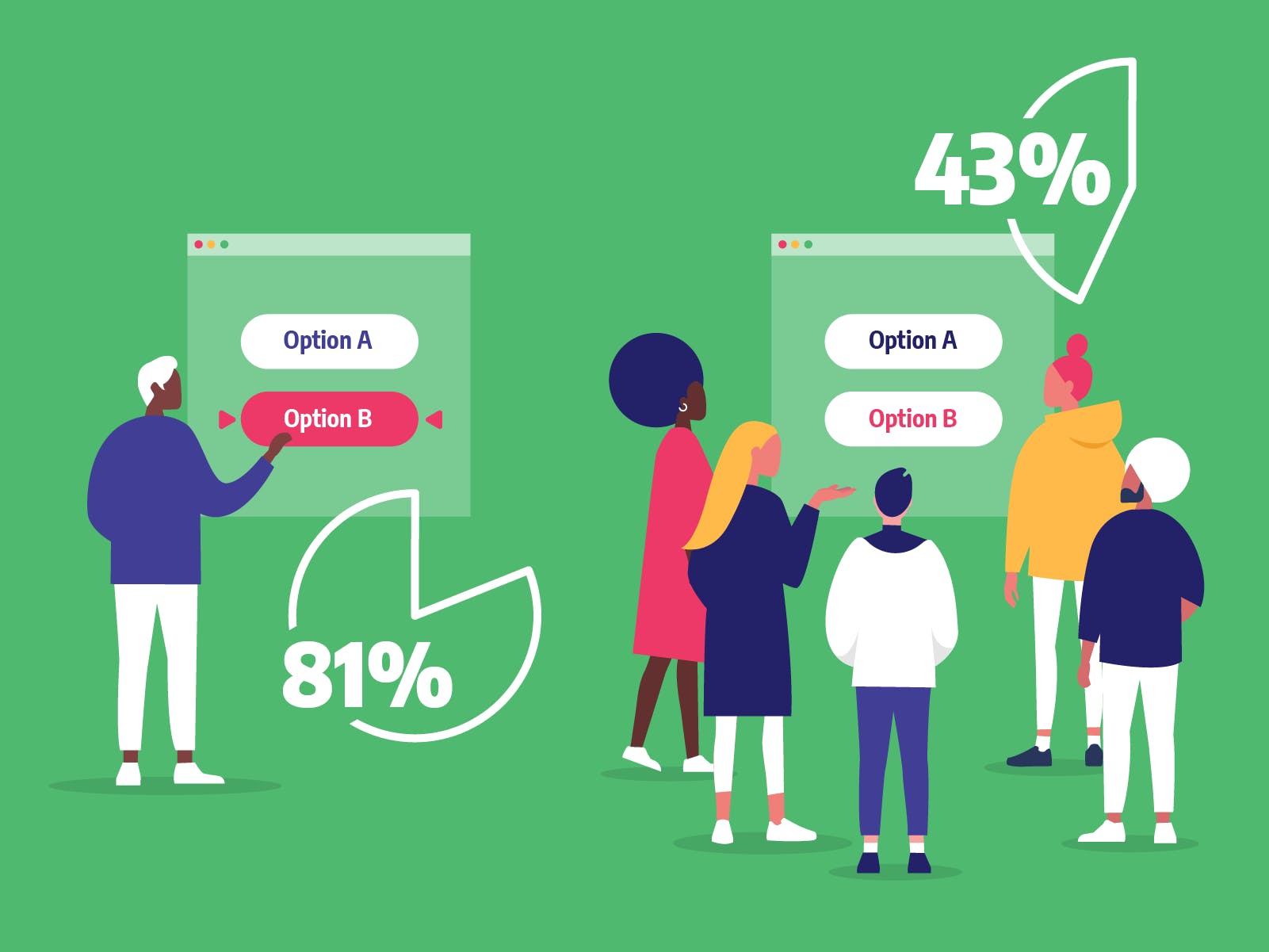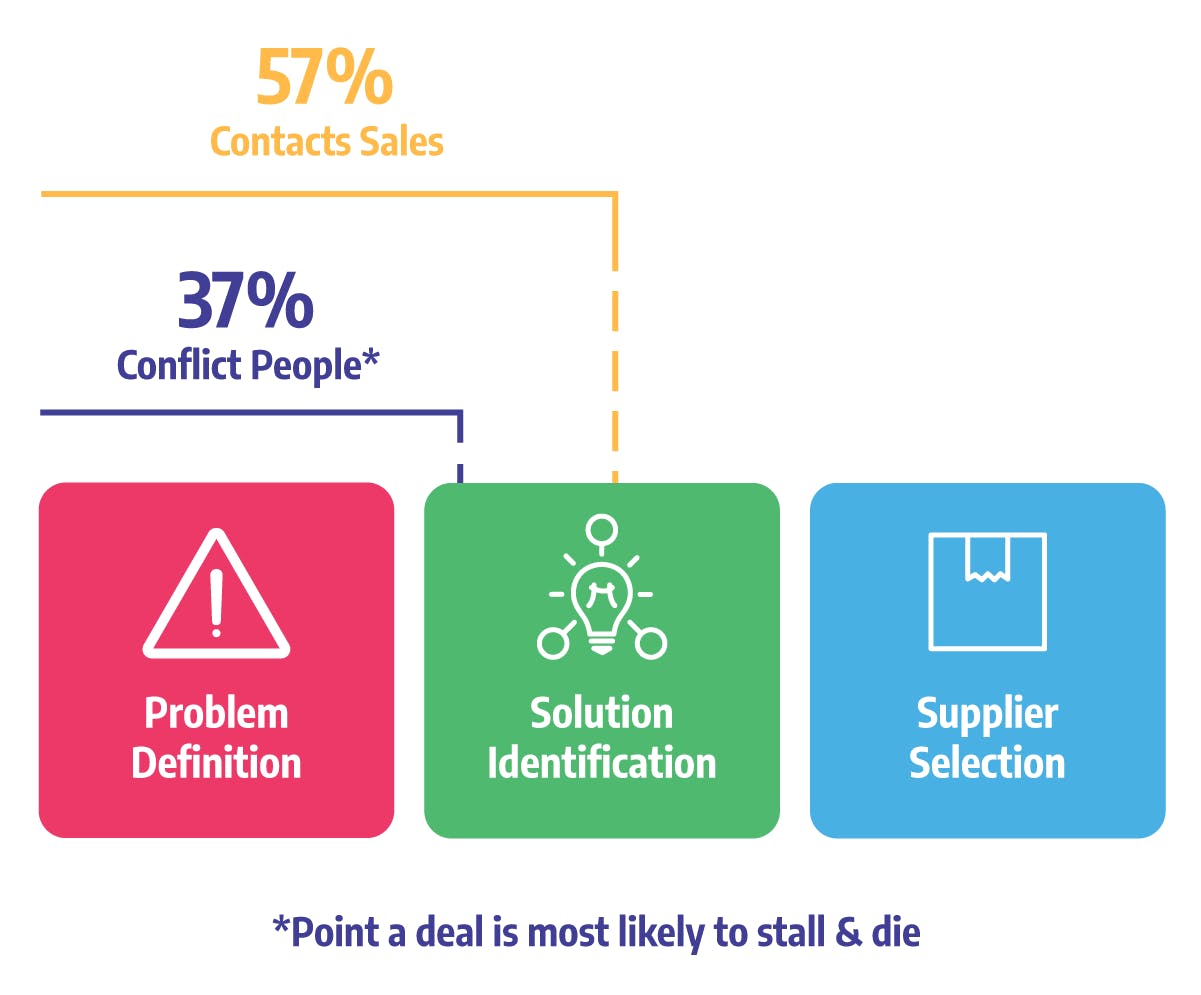
Nowadays, you have to sell that very same thing to an average of 5.4 stakeholders. Why? Well, largely due to consensus buying.
Consensus buying occurs when a business makes purchasing decisions involving cross-functional groups within an organization, instead of how buying decisions have been made historically, which is that a single executive typically made the decisions for the company.
Because the business-to-business (B2B) buying decisions are often made by consensus, suppliers must learn to adapt and sell to this new buying behavior, taking into consideration all the different priorities of the buying teams.
The solutions being sold nowadays are more cross-functional in nature, and therefore more than one department needs to be involved in decision-making.
If a group decides to make a purchase together, then the risk for an individual company stakeholder making a bad call is greatly reduced. Plus, the increased complexity and cost of solutions in the marketplace only increases the need to CYA.
Information protection acts require one department to check the other and so on.
Modern management style trends and flatter organizational structures more easily allow for this group-buying consensus.
Because the buyer dynamic has changed, in order to keep up, so too, must the seller’s. It is now up to B2B companies to help prospective clients overcome the struggle to purchase by marketing not to the business, but to the people in it. It’s time for business-to-people (B2P) marketing.

While a single decision maker has an 81% likelihood of making a decision, 5.4 decision makers decrease the likelihood of making that very same decision to 43%, according to The Challenger Customer.
Remember those three phases to the purchase buying process: problem definition, solution identification, and supplier selection? A prospective customer doesn’t usually contact a sales rep until they are more than halfway through the purchase process.
Meanwhile, group conflict among stakeholders usually peaks 37% of the way through the process.

All of this adds up to a big fat zilch for business opportunities as most of the opportunities die on the vine before B2B vendors are ever contacted.
You might think mastering this complex sale would be as easy as throwing your whole bag of tricks at the opportunity, but we don’t think that’s necessary.
Conventional wisdom solutions would tell you to track all of the decision-makers down and sell them all on your product by tailoring messages to each stakeholder until you get the buy-in you want.
However, that would be a mistake. To track all of the stakeholders down and market/sell to them individually would mean you’d need additional overhead to execute this plan, not to mention personalizing your messages actually decreases the likelihood of a group making a decision at all.
Instead of selling individually, why not try selling them all together and build a consensus sale within the group by becoming the group’s facilitator.
Instead of selling to all internal stakeholders, why not just sell to the internal champions via consensus marketing? Find the buyers that you know can push the dial for the others and provide them with the information and tools they need to rally the rest of the group around your product or service.
Through our research, we have pinpointed three types of internal champions as our go-to’s in any consensus buying situation:

We have found that when you teach these key stakeholders something they don’t know, they are more likely to rally around the idea, and thus get all the other stakeholders rallied around it too.
Win over your audience with our approach to consensus buying. Contact us to get the conversation started.
Get marketing insights that actually move the needle — directly in your inbox.



